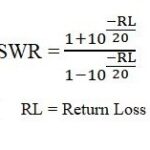What is the Best Frequency Band for LTE?
When it comes to LTE (Long-Term Evolution), the frequency band plays a crucial role in determining the network’s performance and coverage. You might be wondering, “What exactly makes one frequency band better than another for LTE?” Let me explain it to you in detail so you can understand the relationship between frequency bands and LTE performance.
Firstly, LTE operates on a wide range of frequency bands, which are designated by the 3rd Generation Partnership Project (3GPP). These bands are essentially ranges of frequencies that wireless carriers use to deliver data and voice services. The best frequency band for LTE depends on several factors, such as coverage area, speed, network capacity, and available spectrum.
Typically, the choice of frequency band is dictated by several considerations, including the country’s regulatory framework, the available spectrum, and the specific needs of the network. But, there are some bands that are generally considered more efficient or offer better performance for LTE services. Let’s dive into the details.
Key Factors That Determine the Best Frequency Band
- Coverage: Lower frequency bands (below 1 GHz) provide better coverage, especially in rural or less densely populated areas. These frequencies can travel longer distances and penetrate through obstacles like buildings, which makes them ideal for offering broad coverage.
- Speed: Higher frequency bands (above 1 GHz) tend to provide faster data speeds because they can carry more data. These frequencies are typically used in urban areas where high-speed internet access is in demand.
- Capacity: Mid-range frequencies (1-6 GHz) are great for handling large amounts of data, particularly in dense urban environments where many people are using the network simultaneously.
- Latency: The frequency band can also influence latency. Lower frequencies generally have lower latency due to shorter signal paths, while higher frequencies may have slightly higher latency, though this is often negligible in practice.
Popular LTE Frequency Bands
Here are some of the commonly used LTE frequency bands and their characteristics:
- Band 3 (1800 MHz): This band is widely used globally, offering a good balance between coverage and capacity. It’s a popular choice for urban and suburban networks where high speeds and solid coverage are necessary.
- Band 7 (2600 MHz): This band is often used in urban areas to provide high-speed data transfer. It has a higher capacity than lower bands but offers relatively shorter coverage distances due to its higher frequency.
- Band 20 (800 MHz): This band operates in the lower frequency range, making it ideal for coverage in rural and suburban areas. It’s great for providing reliable service over long distances and penetrating through obstacles.
- Band 28 (700 MHz): Another lower-frequency band, Band 28 is popular in many regions for offering both excellent coverage and strong penetration indoors. It’s widely used for building robust LTE networks.
Which Frequency Band is Best for Your Needs?
When selecting the best frequency band, it depends on your specific network requirements. For example, if you’re focused on providing widespread coverage in rural areas, lower-frequency bands like Band 20 or Band 28 are optimal due to their longer range and better penetration. On the other hand, if you’re focused on delivering high-speed data in dense urban environments, higher frequency bands such as Band 7 or Band 3 are likely to be more suitable because of their higher data capacity and ability to handle greater network traffic.
The ideal frequency band for LTE is not the same for every scenario. It depends on what you are aiming to achieve, whether it’s widespread coverage, high-speed data, or maximum capacity in highly populated areas.
In previous articles, we’ve touched on how LTE technology works and its impact on network performance. Understanding the role of frequency bands in LTE is essential, as the right frequency band ensures that the network meets your specific requirements, be it for urban coverage or rural service. As we move forward, understanding how LTE operates across these different bands will help you make more informed decisions about network design and deployment.


